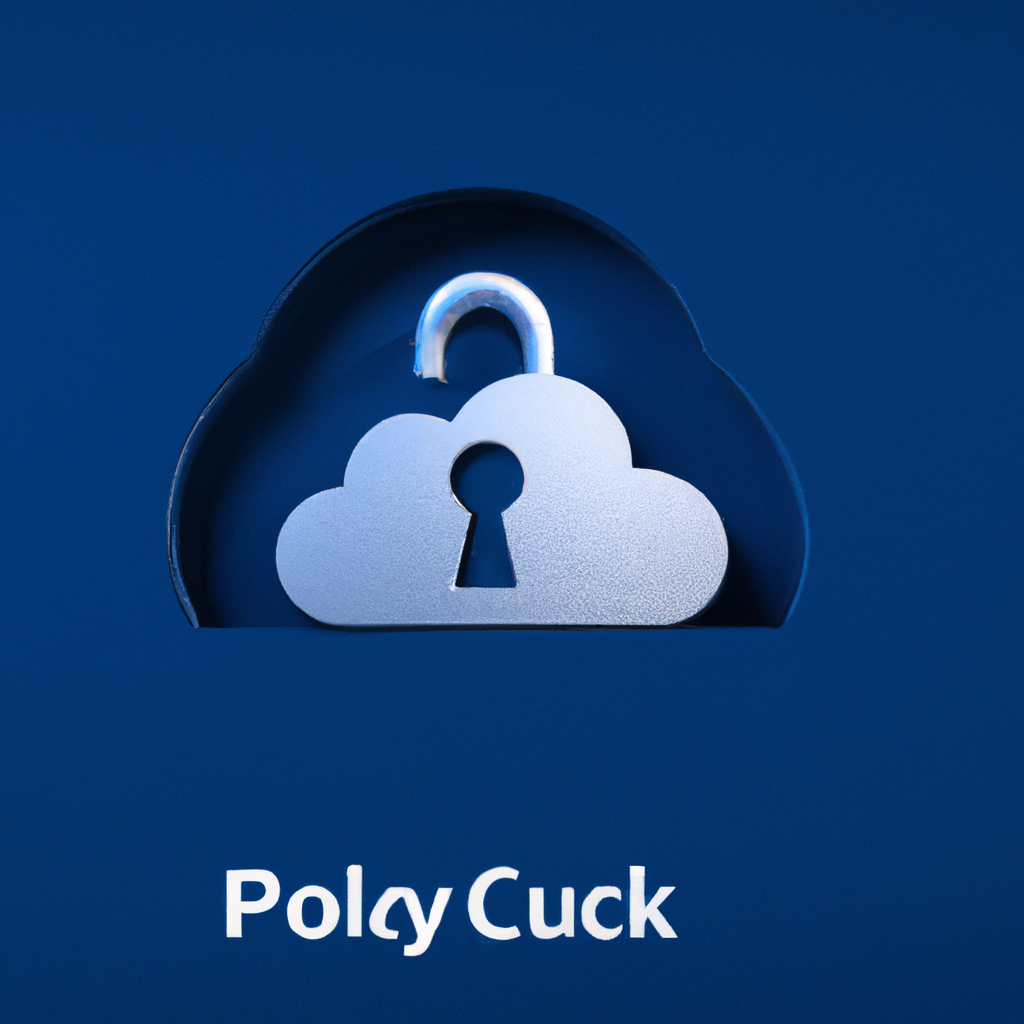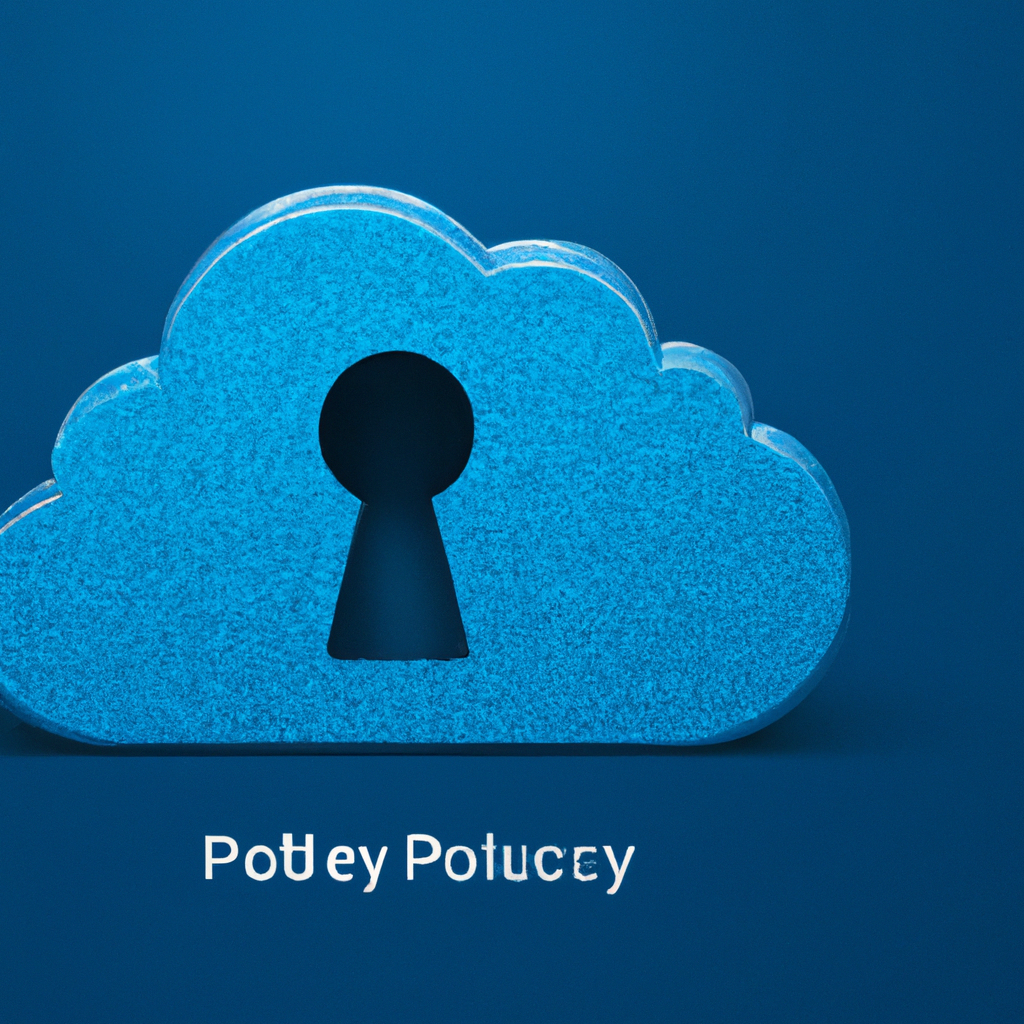Azure Policy is a powerful tool that ensures your cloud resources remain compliant with your organization’s security and governance requirements. This article will explore how Azure Policy enables you to enforce compliance and maintain control over your cloud environments, providing you with peace of mind and the ability to confidently embrace the benefits of the Azure Cloud.

Azure Policy Overview
What is Azure Policy?
Azure Policy is a service in Microsoft Azure that helps you govern your resources in the cloud by applying and enforcing compliance rules. It provides a centralized and standardized way to define and manage policies across your Azure environment.
Why is Azure Policy important?
Azure Policy is important because it enables organizations to enforce compliance and governance standards, ensuring the security and integrity of their cloud resources. It allows you to define and enforce specific rules, which can help prevent misconfiguration, ensure adherence to regulatory requirements, and enforce best practices and standards.
How does Azure Policy enforce compliance?
Azure Policy enforces compliance by evaluating resources in your Azure environment against defined policies. It automatically scans and checks the compliance of your resources against these policies, and takes appropriate actions to remediate any non-compliant resources. It provides real-time monitoring and reporting to help organizations track and maintain compliance throughout their cloud infrastructure.
Creating and Managing Azure Policies
Accessing Azure Policy
To access Azure Policy, you can navigate to the Azure portal and search for “Azure Policy” in the search bar. This will take you to the Azure Policy service, where you can create, manage, and monitor policies.
Creating a policy definition
To create a policy definition, you need to define the rules and conditions that a resource must meet to be considered compliant. You can specify various properties such as resource types, locations, tags, and other conditions. Once the policy definition is created, it can be assigned to resources or resource groups.
Assigning a policy
After creating a policy definition, you can assign it to specific resources or resource groups. When a policy is assigned, it will be evaluated against the associated resources to check for compliance. You can also assign policies at the management group level to enforce compliance across multiple subscriptions.
Managing and monitoring policies
Azure Policy provides a comprehensive interface to manage and monitor policies. You can view the compliance status of your resources, track policy evaluation results, and take action on any non-compliant resources. Additionally, you can set up notifications and alerts to stay informed about compliance changes in your Azure environment.

Policy Initiatives and Built-in Policies
What are policy initiatives?
Policy initiatives in Azure Policy allow you to group related policies together as a single unit for easier management. They provide a way to organize and enforce compliance for specific scenarios or requirements. For example, you can create a policy initiative that includes a set of security-focused policies to ensure the security of your Azure resources.
Using built-in policies
Azure Policy provides a wide range of built-in policies that cover common compliance scenarios. These pre-defined policies can be easily assigned to your resources or resource groups. Examples of built-in policies include enforcing password complexity requirements, restricting publicly accessible storage accounts, and enabling encryption for Azure Virtual Machines.
Creating custom policies
In addition to using built-in policies, Azure Policy allows you to create custom policies tailored to your organization’s specific compliance requirements. Custom policies enable you to define unique rules and conditions that align with your governance standards. You can create custom policies using Azure Policy’s policy definition language, which provides a flexible and extensible way to express policy rules.
Policy Enforcement and Evaluation
Policy enforcement process
Azure Policy enforces policies by continuously evaluating the compliance of resources in your Azure environment. When a policy is assigned to a resource, the policy engine evaluates the resource’s properties against the defined rules. If a resource is found to be non-compliant, Azure Policy takes remediation actions based on the configured policy effect.
Policy evaluation and remediation
During policy evaluation, Azure Policy compares the resource’s properties against the rules defined in the policy. If the resource meets the policy’s conditions, it is considered compliant. If not, Azure Policy applies the policy effect, which can be either an audit or a deny action. For non-compliant resources, Azure Policy can automatically trigger remediation actions to bring the resource back into compliance.
Automating policy enforcement
Azure Policy allows you to automate policy enforcement by integrating with Azure Resource Manager templates, Azure DevOps pipelines, or third-party configuration management tools. This automation streamlines the deployment and management of policies, ensuring that compliance is enforced consistently across your Azure environment.

Policy Compliance Reporting
Monitoring compliance
Azure Policy provides real-time monitoring of policy compliance in your Azure environment. You can view the compliance status of your resources and track any changes or violations. The compliance dashboard gives you an overview of your organization’s compliance posture, allowing you to identify areas that need attention.
Viewing and exporting compliance data
Azure Policy allows you to view and export compliance data for auditing and reporting purposes. You can generate reports that provide detailed information about the compliance status of resources, policy evaluation results, and any remediation actions taken. This data can be exported to various formats, such as CSV or JSON, for further analysis or integration with other systems.
Integrating with Azure Monitor
Azure Policy can be integrated with Azure Monitor to provide a holistic view of compliance and security across your Azure environment. By leveraging the monitoring capabilities of Azure Monitor, you can set up alerts and notifications based on policy evaluation results, ensuring that you are proactively alerted to any compliance issues.
Azure Policy Use Cases
Ensuring governance and security
Azure Policy enables organizations to ensure governance and security in their Azure environment. It allows you to enforce policies that prevent the creation of non-compliant resources, enforce security configurations, and enforce organizational standards and best practices. By using Azure Policy, you can maintain control over your cloud infrastructure and reduce the risk of security breaches or compliance violations.
Meeting regulatory requirements
Organizations operating in regulated industries often have specific compliance requirements to meet. Azure Policy can help meet these regulatory requirements by enforcing policies that align with industry-specific regulations. Examples include enforcing data encryption, configuring access controls, and ensuring proper auditing and logging.
Enforcing best practices and standards
Azure Policy allows you to enforce best practices and standards across your Azure environment. By defining policies that align with industry best practices, you can ensure that resources are configured optimally, minimize security risks, and improve the overall performance and reliability of your cloud infrastructure.

Integration with Azure Security Center
Azure Security Center and Azure Policy integration
Azure Policy can be integrated with Azure Security Center to provide a comprehensive security and compliance solution. By combining the capabilities of both services, organizations can leverage Azure Policy to enforce compliance rules and use Azure Security Center to detect and respond to security threats.
Using the built-in security policies
Azure Security Center comes with a set of built-in security policies that can be managed and enforced through Azure Policy. These policies cover a wide range of security controls and can help organizations meet industry-specific security requirements. Examples of built-in security policies include enabling Network Security Groups, enabling Azure Advanced Threat Protection, and enforcing secure connectivity for Virtual Machines.
Azure Policy vs Azure RBAC
Understanding the difference
Azure Policy and Azure Role-Based Access Control (RBAC) are two distinct services in Azure that serve different purposes. While Azure Policy governs resource compliance and enforcement, Azure RBAC focuses on managing user access to Azure resources. Azure Policy ensures that resources are configured correctly, while Azure RBAC controls who can perform specific actions on those resources.
Working together for comprehensive compliance
Azure Policy and Azure RBAC can work together to provide comprehensive compliance and governance for your Azure environment. By combining the capabilities of both services, organizations can enforce compliance rules through Azure Policy and control user access through Azure RBAC. This combination ensures that resources are properly configured and accessed by authorized individuals.

Azure Policy Adoption and Best Practices
Planning for policy adoption
Before adopting Azure Policy, it is important to plan and define your organization’s compliance requirements and standards. Identify the policies that are relevant to your organization and consider the impact on existing resources. Ensure that policies are aligned with your governance goals and industry-specific compliance requirements.
Defining policy scope and assignments
When defining policies, carefully consider the scope and assignments. Start with a small set of policies and gradually expand the scope based on your organization’s needs. Assign policies to specific resources or resource groups to ensure that compliance rules are targeted appropriately. Also, consider using policy initiatives to group related policies together for more efficient management.
Implementing continuous policy compliance
To ensure continuous policy compliance, it is important to regularly monitor and review policy evaluation results. Use the compliance dashboard and reporting capabilities of Azure Policy to identify non-compliant resources, track remediation actions, and address any issues. Implement automated monitoring and remediation processes to maintain compliance and minimize manual effort.
Conclusion
Azure Policy is a powerful service that enables organizations to enforce compliance and governance in their Azure environment. By defining and managing policies, organizations can prevent misconfiguration, enforce security controls, and meet regulatory requirements. With Azure Policy, you can confidently deploy resources in the cloud while maintaining control and ensuring adherence to best practices and standards.
